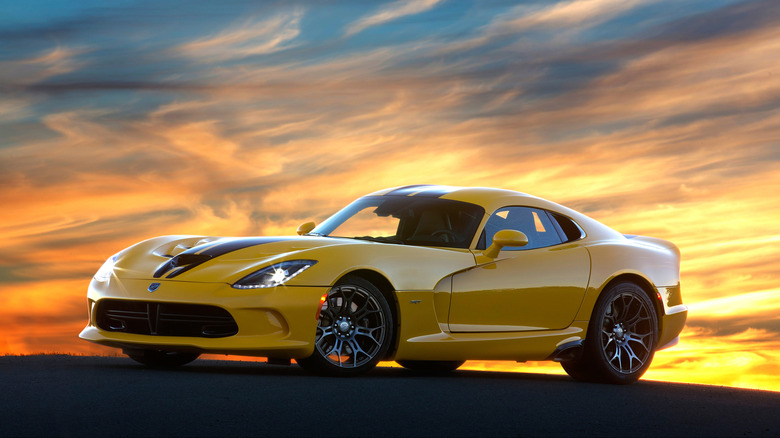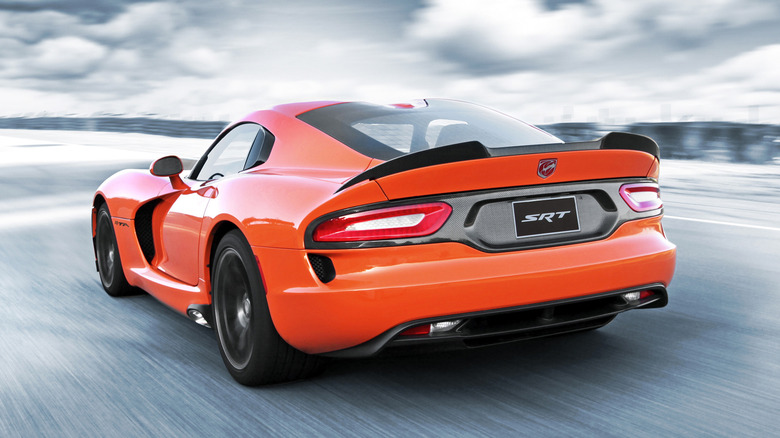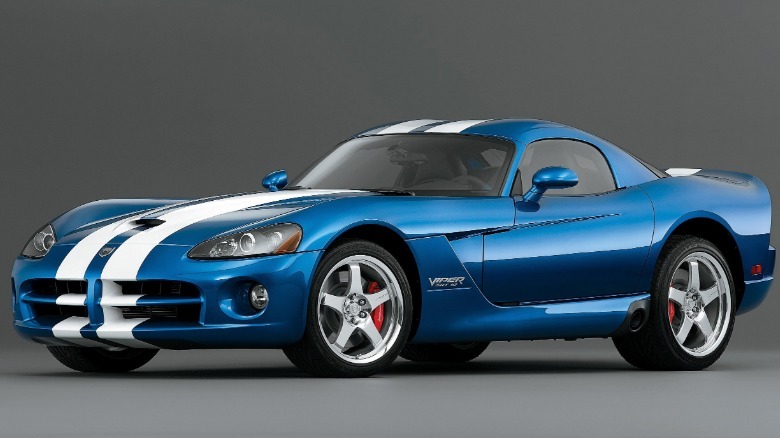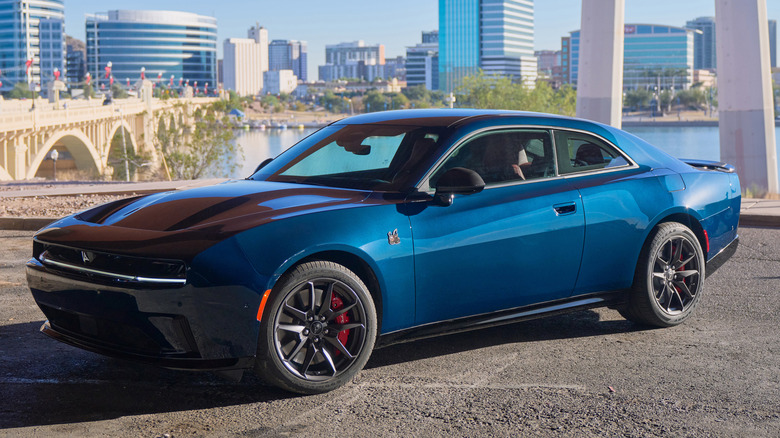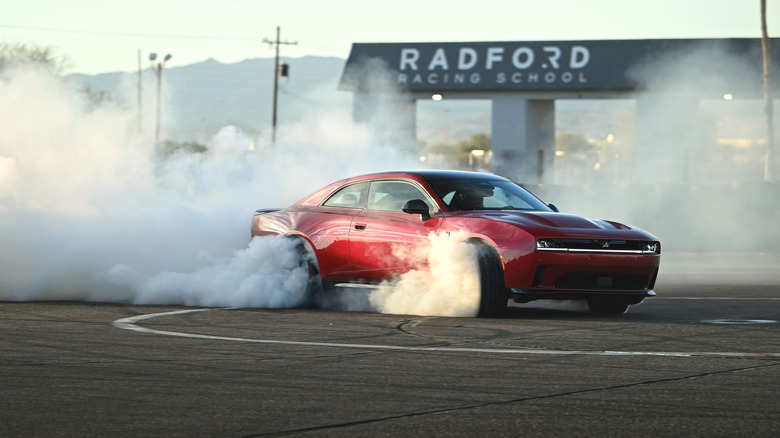SRT Is Back, But Without The Viper, Will Anyone Care?
Stellantis, the company in charge of brands like Jeep, Dodge, Ram, and Chrysler, today announced that it is bringing back the SRT brand and is hard at work ensuring the resurrected marque is staffed with the best and brightest the automaker has to offer. "SRT" — which stands for "Street and Racing Technology" — will be a "single, dedicated entity" according to Stellantis' press release, taking charge of motorsports endeavors and performance cars.
That's all well and good, and no one is going to argue against more American performance cars. Still, there's a glaring issue with the announcement that's a snake in the boot of the conversation. The North American umbrella of Stellantis brands has very few performance cars, and the one model that bore the old SRT marque — the Viper — has been discontinued for years. Additionally, most other cars that were SRT editions under the model's respective brands, like the Chrysler 300 and Dodge Challenger, are also long gone.
In fact, as of now, the only vehicle that actually still wears an SRT badge is the Dodge Durango. Stellantis is going to have to make a few serious moves to make the SRT name viable.
A short history of SRT
The SRT name first appeared all the way back in 2002, when Chrysler was still part of the Daimler umbrella of companies. It was founded as a performance division that would engineer sportier versions of Chrysler cars, like the Dodge Neon SRT-4 or Dodge Viper SRT-10. That branding would soon extend into cars like the Dodge Challenger SRT-8, Dodge Charger SRT-8, a V10-powered Ram SRT-10, and so on. A number of cars from Jeep, Dodge, and Chrysler would get the SRT treatment over the years. Eventually, the number suffix was dropped, shortened to just an "SRT" badge.
The SRT line morphed into its own separate brand for the 2013 model year, with the Viper as its only car. For anyone familiar with the wild history of the Viper, having just that car in the lineup was a big deal. The Viper was the be-all and end-all of bonkers American performance cars, years before the Hellcat was even an idea. The 2013 SRT Viper had an 8.4-liter V10 that put down 640 horsepower and 600 pound-feet of torque to just the real wheels. A press release from the time claims that it was the most horsepower from any non-turbocharged or supercharged car in the world.
The Viper's time as a SRT standalone came to an end very quickly, as it was returned to the fold of Dodge just two model years later in 2015. After that, the SRT name was used more liberally, most notably affixing itself to the supercharged Hellcat models and Scat Pack editions of various Stellantis models.
Not associated with success as a brand
As a name or entity somewhere within Stellantis (or Chrysler), SRT was responsible for some spectacular cars. No one is going to argue that the Viper and Challenger Hellcat don't have any merit. But its history as a standalone brand is troubled at best and entirely forgotten at worst. It would be like Ford floating around resurrecting the "Edsel" nameplate. As a brand by itself, SRT isn't exactly associated with success. Historically, it was better when it referred to special versions within existing brands.
Additionally, there's the issue of bringing the brand back to life at this current time in Stellantis history. Despite its heritage, it's not exactly rich with performance cars under any of the current brands. Jeep has just the 392 cubic-inch V8 powered versions of the Wrangler, Dodge has the now electric Charger, and Ram has a few "RHO" trucks. It's a very limited lineup.
Do something with the name
Unless Stellantis brings back the Viper (an extremely unlikely event), SRT isn't going to have a lot to work with as a dedicated brand. Drivers likely don't want more brands within an already confusing corporate umbrella: They just want more cars. In the short term, the new SRT branding will likely appear on the Dodge Charger at least, maybe a few Ram trucks, and cars within the NASCAR truck series. Other than that, pending any earth shattering announcements, the SRT name might not show up on anything notable for a while, at least until a new car is announced.
Goofy branding on performance cars is fun, but no one wants a repeat of the SRT from 2013 to 2015 (sans the Viper). With SRT, Stellantis needs to do one (or all) of a few things. It needs to bring back a halo flagship car like the Viper, work the existing lineup into something exciting, or show up to the race at motorsports events and take home a few trophies. Those are all easier said than done, but without proving it can reboot itself convincingly, SRT might struggle to take off from the starting line.
